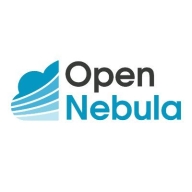

BMC Cloud Lifecycle Management and OpenNebula are competing cloud management platforms. BMC Cloud Lifecycle Management seems to have the upper hand due to its extensive support and scalable solutions, although OpenNebula's rich feature set and perceived value make it a strong contender.
Features: BMC Cloud Lifecycle Management includes predictive analytics, policy-driven resource allocation, and a multi-cloud portal. OpenNebula offers strong flexibility, hybrid and edge computing support, and a user-friendly UI.
Room for Improvement: BMC Cloud Lifecycle Management could enhance user interface design, simplify integration complexities, and reduce initial setup costs. OpenNebula could expand support documentation, enhance customer service response time, and optimize costs for larger scale deployments.
Ease of Deployment and Customer Service: BMC Cloud Lifecycle Management provides structured deployment models, robust integration capabilities, and comprehensive support services. OpenNebula emphasizes a straightforward deployment process with agile customer support, catering to environments needing rapid deployment.
Pricing and ROI: BMC Cloud Lifecycle Management involves higher setup costs but offers substantial ROI with efficient resource management. OpenNebula provides cost-effective initial setups with quick returns due to its open-source model, saving costs over time.
| Product | Market Share (%) |
|---|---|
| OpenNebula | 5.7% |
| BMC Cloud Lifecycle Management | 0.9% |
| Other | 93.4% |

| Company Size | Count |
|---|---|
| Small Business | 7 |
| Midsize Enterprise | 6 |
| Large Enterprise | 3 |
BMC's cloud management platform drives digital innovation with agile, full-stack service provisioning across cloud and traditional platforms. BMC Cloud Lifecycle Management scales easily while integrating with essential compliance and governance policies to reduce risk.
OpenNebula provides the most simple but feature-rich and flexible solution for the comprehensive management of virtualized data centers to enable private, public and hybrid IaaS clouds. OpenNebula interoperability makes cloud an evolution by leveraging existing IT assets, protecting your investments, and avoiding vendor lock-in.
OpenNebula is a turnkey enterprise-ready solution that includes all the features needed to provide an on-premises (private) cloud offering, and to offer public cloud services.
We monitor all Cloud Management reviews to prevent fraudulent reviews and keep review quality high. We do not post reviews by company employees or direct competitors. We validate each review for authenticity via cross-reference with LinkedIn, and personal follow-up with the reviewer when necessary.